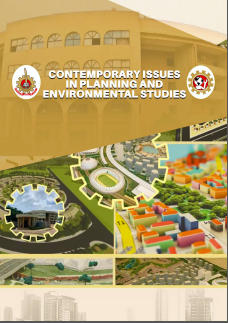Assessment of Children’s participation in Attributes of Traditional public space (Ojude) in Ilorin, Nigeria
DOI:
https://doi.org/10.5281/zenodo.17053176Keywords:
Attributes, Ojudes, Traditional Public Space, Cultural ValuesAbstract
The paper aims at assessing children activities in relation to the attributes of traditional public spaces popularly known as ‘Ojude’ for children socio-cultural well-being in Ilorin, Nigeria. The study adopting quantitative (questionnaire) and qualitative (participant observation, photo-taking and drawing) methods. Both probability and non-probability sampling techniques were adopted. The estimated population of children in the study area was 28, 271, from which a sample size of 500 was drawn using Raosoft sample size calculator. The population is first stratified based on the five Ojudes purposively selected for this study (Ojude Oba, Ojude Baloguns, Ojude Magajis, Ojude Waasis and Agbo-Ile). Each of these constitutes a stratum from which the participating children were selected, using purposive sampling technique. The sets of data collected were analysed separately. Quantitative data obtained through questionnaires were analysed through descriptive and inferential statistics’.. Qualitative data derived from interviews and visual texts obtained through drawings and photographs were analysed using content analysis. The results reveal that cultural, physical and social attributes were the major attributes common and impactful in the ojudes as 88.0% (403) of the children speak Yoruba. This may not be unconnected with the dominant ethnic affiliation of most residents as the children are deeply rooted in the prevalent culture. However, the remaining 12 % were composed of five other languages inclusive of English (4.1 %), Hausa (3.3%), Fulani (1.5%), Nupe (1.1%) and Baruba (0.2%), as other languages acounted for 1.7 %. Further result revealsthat socio-cultural attachment of children to their Ojudes could re-awaken their consciousness on their cultural values, create enabling environment for social interactions, ensure children’s proper behaviour through play and learning as well as induce self-esteem and confidence. It is therefore recommended that the policy makers, and the built environment professionals particularly, Architects and Urban Designers, are strongly encouraged to engage in the development of traditional public spaces in our rapidly growing cities as a sustainable approach towards improving children’s quality of life.
Downloads
Published
Versions
- 2025-09-04 (2)
- 2025-07-22 (1)
How to Cite
Issue
Section
License
Copyright (c) 2025 Contemporary Issues in Planning and Environmental Studies

This work is licensed under a Creative Commons Attribution 4.0 International License.





